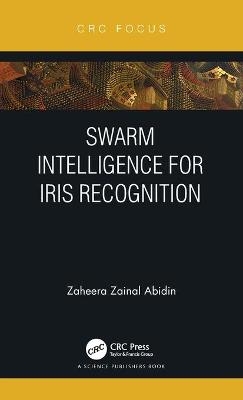
Swarm Intelligence for Iris Recognition
CRC Press (Verlag)
978-0-367-62747-8 (ISBN)
Iris recognition is one of the highest accuracy techniques used in biometric systems. The accuracy of the iris recognition system is measured by False Reject Rate (FRR), which measures the authenticity of a user who is incorrectly rejected by the system due to changes in iris features (such as aging and health condition) and external factors that affect iris image, for instance, high noise rate. External factors such as technical fault, occlusion, and source of lighting that causes the image acquisition to produce distorted iris images create error, hence are incorrectly rejected by the biometric system. FRR can be reduced using wavelets and Gabor filters, cascaded classifiers, ordinal measures, multiple biometric modalities, and a selection of unique iris features. Nonetheless, in the long duration of the matching process, existing methods were unable to identify the authenticity of the user since the iris structure itself produces a template changed due to aging. In fact, the iris consists of unique features such as crypts, furrows, collarette, pigment blotches, freckles, and pupils that are distinguishable among humans. Earlier research was done by selecting unique iris features. However, these had low accuracy levels.
A new way of identifying and matching the iris template using the nature-inspired algorithm is described in this book. It provides an overview of iris recognition that is based on nature-inspired environment technology. The book is useful for students from universities, polytechnics, community colleges; practitioners; and industry practitioners.
Zaheera Zainal Abidin was a project analyst, programmer, trainer and lecturer. She has been Senior Lecturer and Researcher at Universiti Teknikal Malaysia Melaka (UTeM) since 2009. She is CISCO certified (CCNA) in the computer networking field and certified Internet-of-Things specialist, and teaches subjects such as data communication, computer networks, project management, network security and physical security. She has published chapters in books, research journals (indexed and non-indexed) and proceedings and research grant proposals. Also, she is associate editor-in-chief for Journal of Advanced Computing Technology and Application (JACTA) and reviews journal articles. She has been awarded research grants from Ministry of Education Malaysia (FRGS, PRGS and TRGS) and industry (PPRN). Moreover, she loves to write about computer science and information security. She received Bachelor of Information Technology from University of Canberra, Australia and joined ExxonMobil Kuala Lumpur Regional Center as a Project Analyst. She completed her MSc. in Quantitative Sciences at the Faculty of Computer and Mathematical Sciences, Universiti Teknologi MARA, Shah Alam, Selangor, Malaysia. In 2005, she served as a lecturer at Universiti Kuala Lumpur (UNIKL-MIIT) and as a program coordinator while completing her MSc. in Computer Networking also at the Faculty of Computer and Mathematical Sciences, Universiti Teknologi MARA, Shah Alam, Selangor, Malaysia. In 2009, she joined Universiti Teknikal Malaysia Melaka (UTeM) and completed her PhD (2016) in IT and Quantitative Sciences from the Faculty of Computer and Mathematical Sciences, Universiti Teknologi MARA, Shah Alam, Selangor, Malaysia. She won a silver award at 2017 UTeM Exhibition on Feature Extraction based on Enhanced AntColonyOptimization for Iris Identification and a bronze award for Face Recognition using Raspberry PI at 2019 UTeM Exhibition. Research interests include Internet-of-Things, biometrics and network security. Also, she did consultations with Cyber Security Malaysia, Ministry of Health Malaysia and SigTech Solutions Malaysia.
1. Introduction 2. Human Eye 3. The First Phase of Iris Recognition 4. The Second Phase of Iris Recognition 5. Swarm-Inspired Iris Recognition 6. Conclusion
| Erscheinungsdatum | 26.11.2021 |
|---|---|
| Zusatzinfo | 13 Line drawings, black and white; 17 Halftones, black and white; 30 Illustrations, black and white |
| Verlagsort | London |
| Sprache | englisch |
| Maße | 138 x 216 mm |
| Gewicht | 290 g |
| Themenwelt | Informatik ► Theorie / Studium ► Algorithmen |
| Informatik ► Theorie / Studium ► Künstliche Intelligenz / Robotik | |
| ISBN-10 | 0-367-62747-7 / 0367627477 |
| ISBN-13 | 978-0-367-62747-8 / 9780367627478 |
| Zustand | Neuware |
| Haben Sie eine Frage zum Produkt? |
aus dem Bereich


